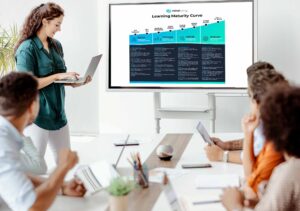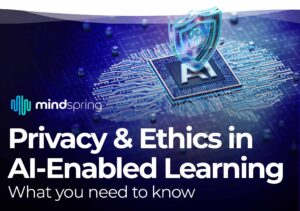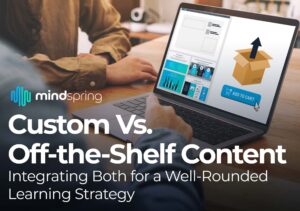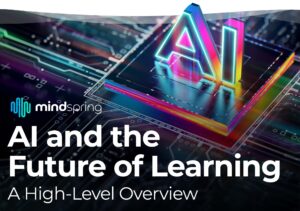Jack Welch, former CEO of General Electric, once said, “An organization’s ability to learn, and translate that learning into action rapidly is the ultimate competitive advantage.”
Thanks to the advances that have taken place in digital technology, our ability to learn is no longer limited to a classroom. The same pertains to corporate development. An organization is only as strong as those working for it, hence the evolution in corporate development.
The four developmental methods that have seen the most change are:
1. Instructor-Led Training
2. Macro-Learning
3. Micro-Learning
4. Digital Learning
Even though these methods have unique benefits, the best solution for any organization is to implement a blended form of training that combines all four of them.
1. Instructor-Led Training
When you think of a typical training session, instructor-led training is usually what comes to mind. Probably because it resembles our traditional method of learning which is rooted in a classroom setting.
But this no longer is the case. Virtual instructor-led training (VILT) has become a more cost-effective method that also happens to be less disruptive than in-classroom led training. According to Training Mag, “86% of virtual classroom participants rated the experience ‘just as engaging’ or ‘more engaging than’ traditional classroom training.”
VILT gives organizations the ability to produce training content that can be easily accessed at any time. People want to learn on their own time, and thanks to VILT technology, that is now possible.
2. Macro-Learning
Focusing on the whole of a topic, that is usually taught through general training modules, is an ideal representation of macro-learning. Its purpose is to focus on the big picture.
The issue behind macro-learning is the time and commitment it takes. Macro-learning doesn’t bode well for those who are learning on-the-go. Which is why it’s best for organizations to implement a mix of macro and microlearning.
Macro-learning explains concepts thoroughly, giving learners complete knowledge of a topic. If an employee is learning a new process or skill, macro-learning is the better option. But if an employee needs immediate help or assistance, micro-learning will be more ideal.
3. Micro-Learning
Micro-learning is typically looked at as a subset of macro-learning. According to Entrepreneur Mark Zides, “Microlearning focuses on the smaller steps that focus on various smaller facets that eventually benefit the bigger picture.”
This has become more evident as technology continues to advance. Micro-learning focuses on using quick bursts of content that can be consumed relatively quick. With the abilities smartphones have, people can access content that can help them sharpen a specific skill, in a short amount of time.
Infographics, podcasts, short video clips, animations and other microlearning elements are all examples of content that is engaging and consumable at the exact time and place the learner needs it. Which means convenient on-the-go training, that’s accessible at their own time.
4. Digital-Learning
Digital learning incorporates several methodologies in order to make learning as easy and accessible as possible. According to the Digital Learning Day Organization, “Digital learning emphasizes high-quality instruction and provides access to challenging content, feedback through formative assessment, and opportunities for learning anytime and anywhere.”
The main objective behind digital learning is to show organizations what areas their employees are struggling with. Identifying weaknesses and correcting them is needed for any organization to succeed, which is why digital learning gives organizations the ability to track the interactions between employees and their training modules. These valuable insights allow organizations to make changes that lead to improvements.
At Inno-Versity, our objective is to provide a simple solution, that provides your employees with complex learning challenges. As technology continues to advance, we also continue to look for ways to advance our solution, so that it can best exceed your expectations.









